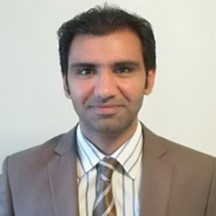Modeling, Control, and Optimization of Power Electronics
A special issue of Electronics (ISSN 2079-9292). This special issue belongs to the section "Power Electronics".
Deadline for manuscript submissions: closed (30 June 2022) | Viewed by 18099
Special Issue Editors
Interests: design, modeling, control and optimization of power electronic converters; characterizations and applications of wide bandgap (WBG) semiconductors; highly efficient and high-power density solutions for power conversions in the applications of more electric aircrafts; electric vehicles; wireless charging and data centers
Special Issues, Collections and Topics in MDPI journals
Interests: energy storage systems; smart grids; V2G
Special Issues, Collections and Topics in MDPI journals
Special Issue Information
Dear Colleagues,
Power electronics has emerged as an enabling technology in the deployment of the next generation of systems, including transportation systems, motor drives, robotics, biomedical applications, renewable energies, smart grids, and data centers, among many others. The demand for higher efficiency, enhanced reliability, higher power density, specific power, and better thermal management poses stringent challenges for these power electronic converters to accommodate. The advent of wide bandgap (WBG) power semiconductors resulted in a paradigm shift of power electronics design through enabling high-temperature, high-density power conversion with improved efficiency. However, employing fast switching devices leads to higher dv/dt and di/dt at the switch nodes and drain/source paths, respectively, which poses great challenges in ensuring safe operation of the switching circuits, especially at an elevated temperature during steady state operation. This results in noise modeling and high-density optimized EMI filter design being areas of immense interest for WBG power electronics. Furthermore, any power electronic system design deals with two spaces: (i) design space, i.e., passive component parameters, (ii) performance space, i.e., efficiency, power density, cost, reliability, etc. It is very well observed from research that performance indices often follow trade-offs among each other for different combinations of design variables. In order to meet superior performance requirements from the designers’ end, the system design boils down to a multi-objective optimization problem for a given set of electro-thermo-mechanical constraints, which can potentially be tackled using genetic algorithm- and machine learning-based optimization methods. The optimization methods can be applied in (a) converter control with fast transient response along with stiff regulation, (b) design of magnetic components (inductors/transformers) as well as magnetic coil for wireless power transfer, (c) volume minimization of passive components along with reliability maximization.
The main aim of this Special Issue is to seek high-quality submissions that highlight emerging applications of high-density power converters, address recent fundamental breakthroughs in topological development as well as control of power electronics, multi-objective constrained design optimization of power converters, and reliable and cyber-resilient power electronics technologies. The topics of interest include, but are not limited to:
- Multi-objective design optimization (based on machine learning/statistical learning/artificial intelligence) of power converter systems
- EMI noise modeling and high-density filter design methodologies
- Non-linear/optimal control schemes for transient performance improvement of power converters
- WBG device characterization for high-frequency power electronics
- High-temperature (>200oC) power electronics
- Power electronics for transportation electrification and data centers
Dr. Ayan Mallik
Dr. Irfan Ahmad Khan
Guest Editors
Manuscript Submission Information
Manuscripts should be submitted online at www.mdpi.com by registering and logging in to this website. Once you are registered, click here to go to the submission form. Manuscripts can be submitted until the deadline. All submissions that pass pre-check are peer-reviewed. Accepted papers will be published continuously in the journal (as soon as accepted) and will be listed together on the special issue website. Research articles, review articles as well as short communications are invited. For planned papers, a title and short abstract (about 100 words) can be sent to the Editorial Office for announcement on this website.
Submitted manuscripts should not have been published previously, nor be under consideration for publication elsewhere (except conference proceedings papers). All manuscripts are thoroughly refereed through a single-blind peer-review process. A guide for authors and other relevant information for submission of manuscripts is available on the Instructions for Authors page. Electronics is an international peer-reviewed open access semimonthly journal published by MDPI.
Please visit the Instructions for Authors page before submitting a manuscript. The Article Processing Charge (APC) for publication in this open access journal is 2400 CHF (Swiss Francs). Submitted papers should be well formatted and use good English. Authors may use MDPI's English editing service prior to publication or during author revisions.
Keywords
- High-density power electronics
- Wide bandgap semiconductor
- EMI filtering
- High-frequency power conversion
- Machine learning and artificial intelligence-based power electronics optimization
- Transportation and data centers






